11 Most Venomous Snakes In The United States You Need To Know About

Across the United States, you can find various dangerous animals. Whether it’s an apex predator or a highly venomous creature, we have to accept the fact that they’re all around us!
Today we’ll go through some of the most venomous snakes found across the United States. Let’s go!
1. Tiger Rattlesnake

Habitat: Southwestern United States (Arizona, Sonoran Desert)
Starting off the list with the dangerous Tiger Rattlesnake from the Viper family. This snake is found across the southwestern United States.
Their venom attacks the nervous system and forces blood pressure to drop. The warning shaker from its rattles might just save your life if you come too close to it.
2. Harlequin Coral Snake
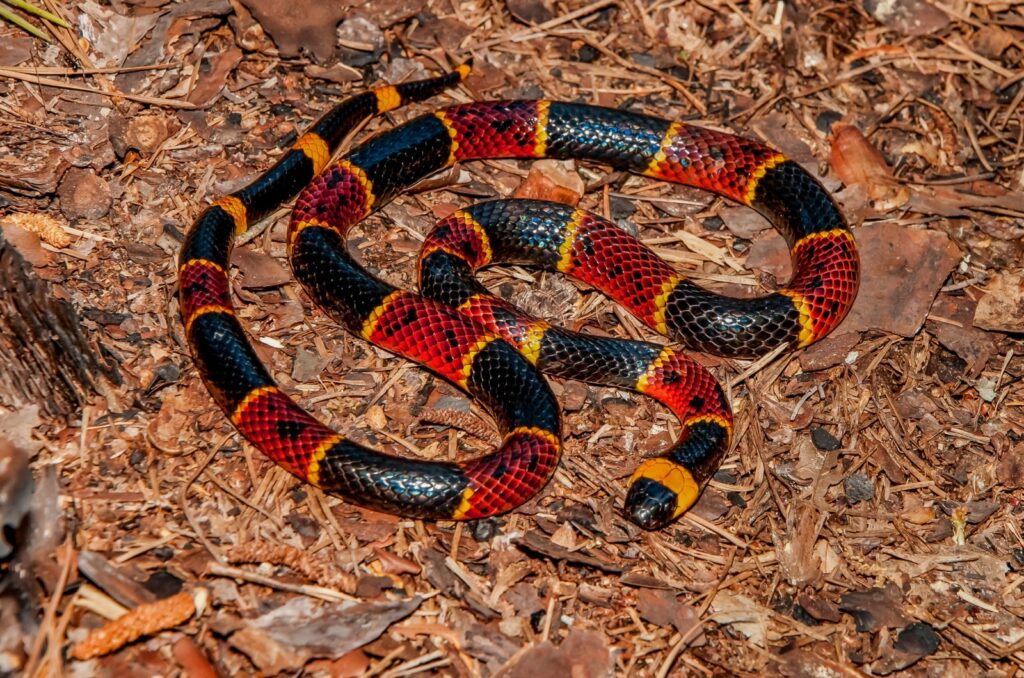
Habitat: Southeastern United States (North Carolina, South Carolina, Georgia, Alabama, Mississippi, Florida, southeastern Louisiana)
This species is endemic to the United States. They are likely to be found in well-drained flatwoods, in debris, and always on the ground.
The Harlequin Coral Snake is highly venomous and its poison can cause paralysis, slurred speech, and blurred vision.
3. Western Diamondback Rattlesnake

Habitat: Southwestern United States (Arizona, New Mexico, California, Oklahoma, Texas)
Also known as the Texas Rattlesnake or Arizona Diamond Rattlesnake, like any other snake from the Viper family, it’s highly venomous.
In just one bite, this snake can deliver an enormous amount of venom which will affect the blood cells, blood vessels, and the heart.
4. Cottonmouth
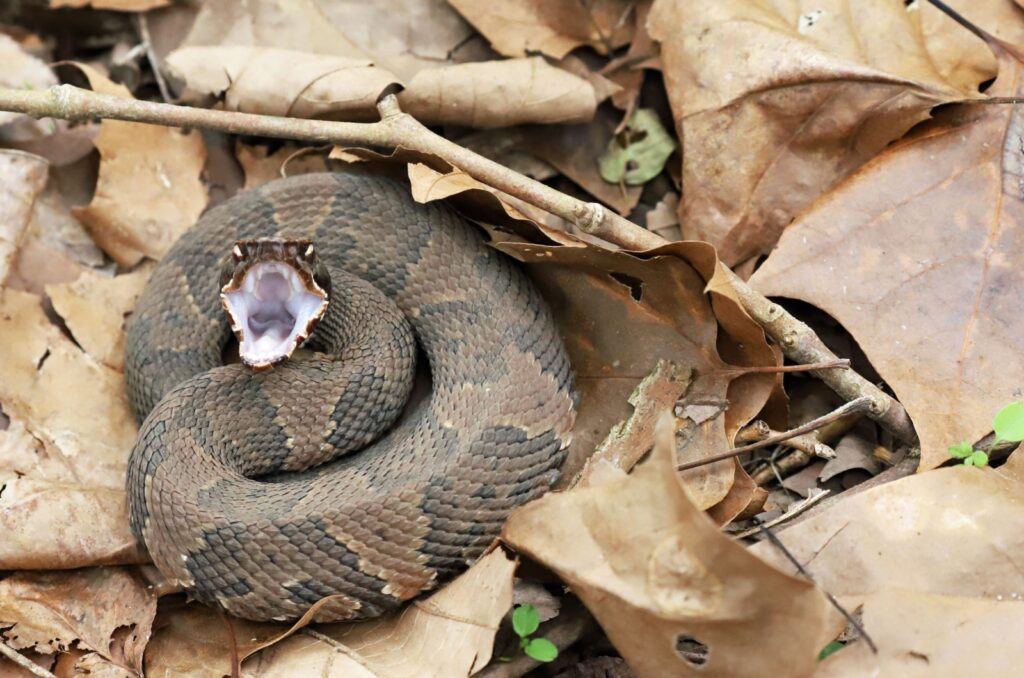
Habitat: Southeastern United States (Oklahoma, Arkansas, Missouri, southeastern Virginia, southern Florida, southeastern Kansas)
Cottonmouth is a pretty aquatic snake and is often found in swamps, creeks, ponds, and lakes. Named after its big white mouth, this is one more snake you don’t want to encounter on your morning hike.
Their venom will attack the tissue and the bite will most definitely leave a huge scar.
5. Sidewinder

Habitat: Southwestern United States (California, Nevada, Utah, Arizona, Sonoran desert)
This snake got its name from the way it moves through the desert. The Sidewinder snake moves sideways through the sand and burrows itself for camouflage.
Although they are less venomous than the rest of the snakes on our list, be careful. They can get as fast as 18 miles per hour!
6. Copperhead
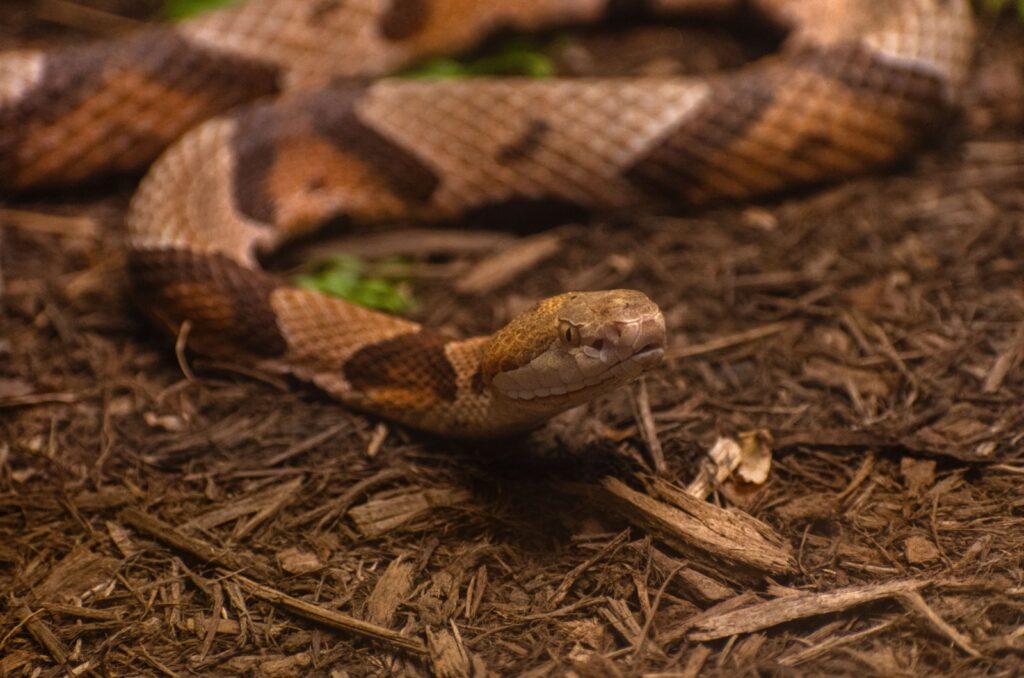
Habitat: Across North America (AL, AR, CT, DE, FL, GA, IL, IN, IA, KS, KY, LA, MD, MA, MS, MO, NE, NJ, NY, NC, OH, OK, PA, SC, TN, TX, VA, WV)
As you can see the Copperhead has a widespread habitat all across the United States. It’s easily recognizable due to its copper-like color.
The Copperhead is known to lay low once humans are around, as it holds its venom for small prey. Their bites are rarely fatal.
7. Eastern Diamondback Rattlesnake
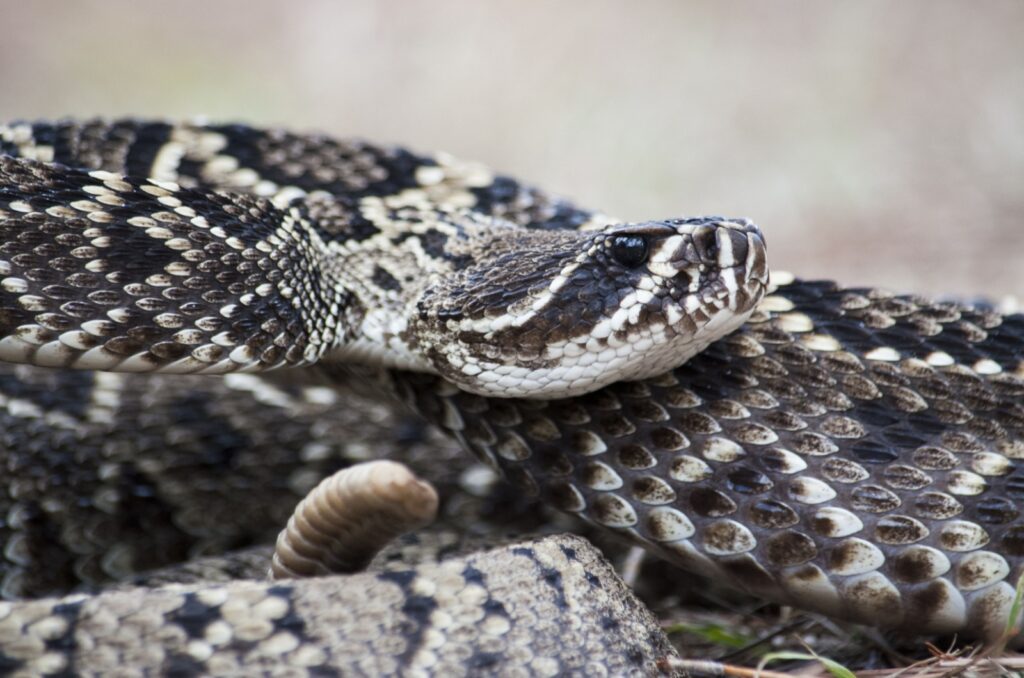
Habitat: Southeastern United States (North Carolina, Mississippi, Louisiana)
This is one of the largest snakes and most venomous snakes in the United States. However, due to its size, the Eastern Diamondback is quite on the slower side.
It ambushes its prey and although it’s not that aggressive, it might strike out of self-defense. Their venom causes tissue damage and destroys red blood cells.
8. Mojave Rattlesnake

Habitat: parts of Arizona, Nevada, New Mexico, and California.
This highly venomous snake is found in the southwestern United States and is commonly seen in deserts, rocky canyons, and scrublands.
The Mojave Rattlesnake’s venom is a potent mixture of hemotoxins and neurotoxins, making it extremely dangerous. The neurotoxins can cause paralysis, while the hemotoxins break down blood vessels and tissues. A bite from a Mojave Rattlesnake can be fatal without immediate medical attention.
9. Timber Rattlesnake

Habitat: eastern United States.
Native to the eastern U.S., the Timber Rattlesnake is found in deciduous forests, mixed woodlands, and hilly terrain, particularly in areas with plenty of cover and access to water.
Its venom contains a potent blend of hemotoxins that cause blood clotting and tissue damage. Though Timber Rattlesnakes are not overly aggressive, their venom can cause severe injury or death to their prey and, if untreated, to humans as well.
10. Southern Pacific Rattlesnake

Habitat: Southern California, Baja California Peninsula, parts of Arizona.
This rattlesnake is notorious for its potent venom, which includes both hemotoxic and neurotoxic properties. Southern Pacific Rattlesnakes are often found in rocky hillsides, woodlands, and grassy areas.
A bite from this snake can lead to severe tissue damage, neurological symptoms, and, without prompt medical treatment, can be life-threatening.
11. Prairie Rattlesnake
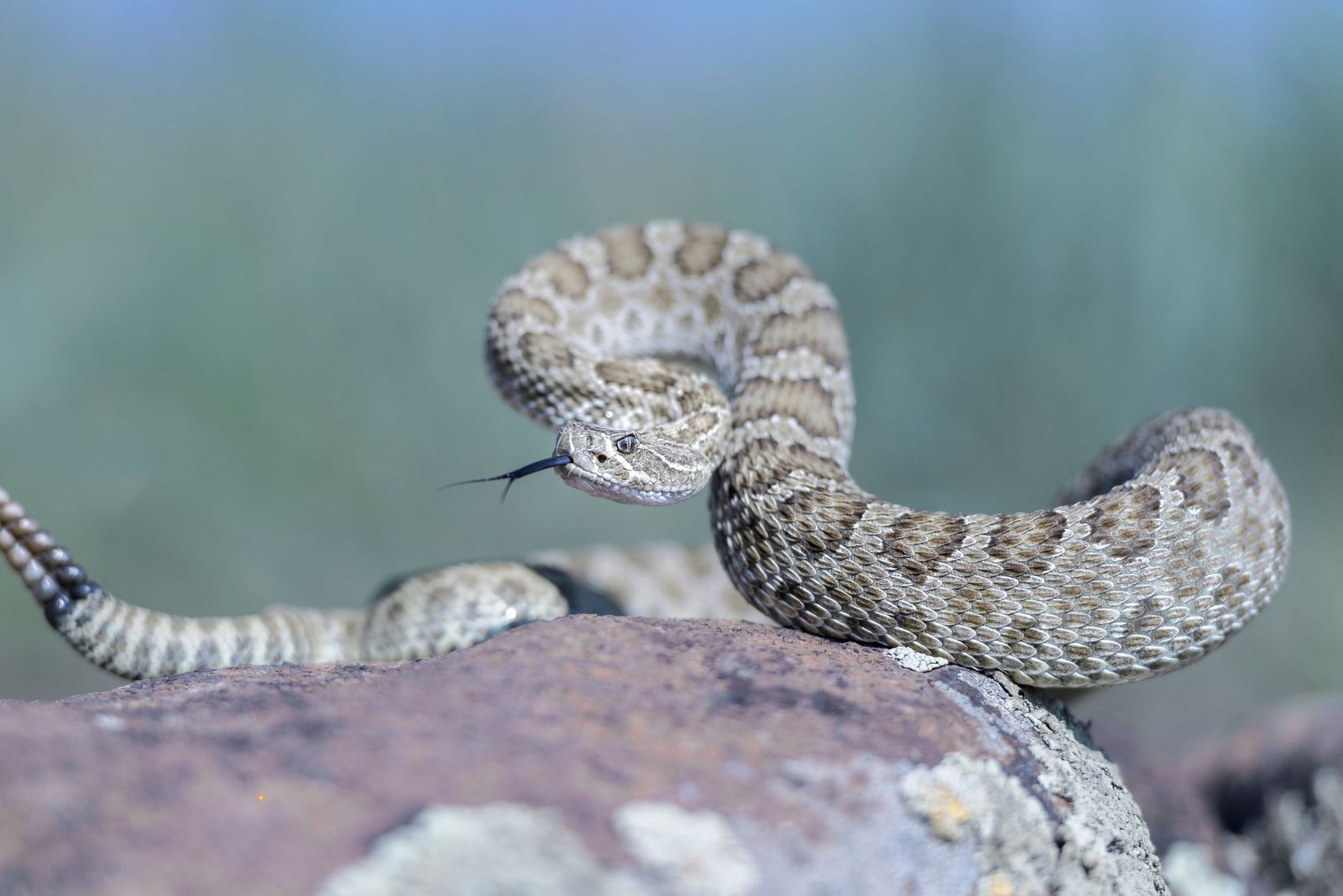
Habitat: Western United States (Colorado, Montana, North Dakota, South Dakota, Nebraska, Kansas, Wyoming, New Mexico, Utah)
The Prairie Rattlesnake, one of the most widespread rattlesnake species in the western U.S., packs a venom that primarily causes significant pain, swelling, and tissue damage.
Found in grasslands, rocky areas, and deserts, this snake is known for its warning rattle, alerting those nearby of its presence. Without treatment, a bite can result in serious complications, making this snake one to avoid.






